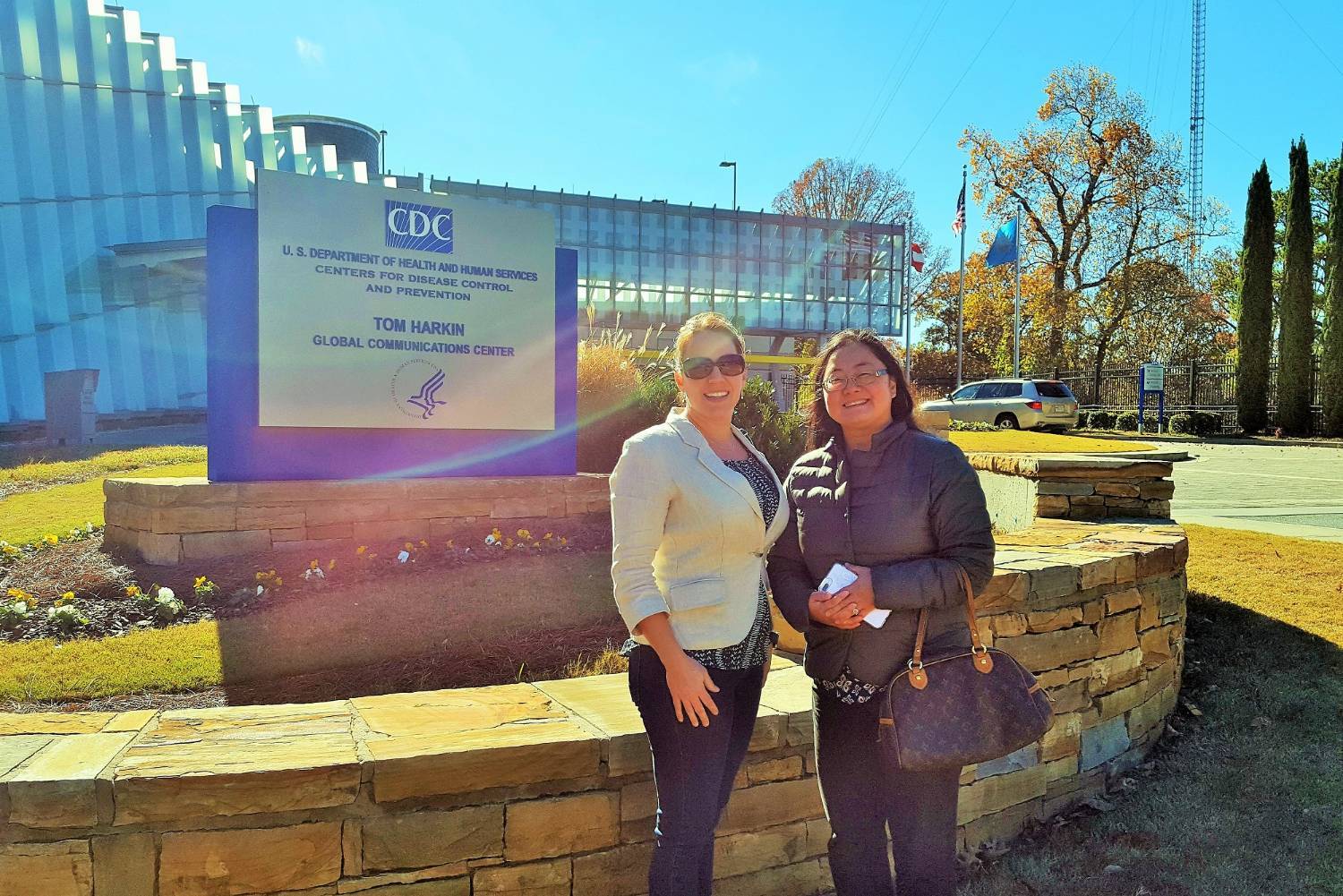 Particulate matter and ozone air quality monitoring stations in US
Particulate matter and ozone air quality monitoring stations in US
Asthma is the most common chronic disease among children, affecting 8.6% or approximately 6.3 million in the U.S. alone. Previous studies have shown that childhood asthma is associated with air pollutants such as particulate matter less than 2.5 micrometers in diameter (PM2.5) and ozone (O3). Compared to adults, children are more sensitive to air pollution and have less historical environmental confounders. Accurate and efficient spatiotemporal interpolation methodology is critical to the assessment of relationships between environmental exposures and health outcomes. Although the literature on spatial/spatiotemporal interpolation methods is extensive, few studies have examined the relationship between spatiotemporally interpolated pollutant concentration values and asthma outcomes in children at the national level. The proposed study will focus on developing efficient and precise multidimensional spatiotemporal interpolation methods and provide a powerful tool for spatiotemporal environmental exposure analysis for childhood asthma. Specific aims include: (1) Develop multidimensional spatiotemporal interpolation methods for fine particulate matter (PM2.5) and ozone (O3). (2) Implement our methods on Spark, a lightning-fast cluster computing framework, to improve the computational ability with large data sets. (3) Estimate local neighborhood ambient air pollution exposure across space and time. Local residential neighborhood air pollution exposure is expected to be more relevant to residents’ asthma outcomes. We will apply the spatiotemporal interpolation to EPA’s repository of ambient air quality data for PM2.5 and O3 to estimate the pollution at the census block level in the contiguous U.S. over multiple years. (4) Evaluate the association of neighborhood PM2.5 and O3 pollution and childhood asthma outcomes in the contiguous U.S. over multiple years. Results from this study will provide evidence of spatiotemporal relationships and potential disparities related to environmental exposure and childhood asthma. Identification of such disparities will lay the foundation for research that specifically targets educational and environmental prevention and intervention efforts to improve air quality and reduce childhood asthma disparities.
 Project collaborators Dr. Gina Besenyi (AU) and Dr. Lixin Li (GSU) travel to CDC to
conduct the national level data analysis
Project collaborators Dr. Gina Besenyi (AU) and Dr. Lixin Li (GSU) travel to CDC to
conduct the national level data analysis
Besenyi, G.M., Yates, H.*, Li, L., Franklin, J., Tong, W., Zhou, X. (under review). Ten years of exposure: Investigating links between air pollution and childhood asthma in the contiguous U.S. Based on Spatiotemporal Interpolation. Presentation submitted to the American Public Health Association 145th Annual Meeting and Exposition, Nov 4-8, 2017, Atlanta, GA.
Yates, H.,* Besenyi, G.M., Li, L., Franklin, J., Tong, W., Zhou, X. (under review). Using spatiotemporal interpolation to investigate air pollution exposure and child asthma in the South over the last decade. Presentation submitted to the Georgia Public Health Association Annual Meeting and Conference, April 11-12, 2017, Atlanta, GA.
Tong, W., Zhou, X., Li, L., Besenyi, G.M., Franklin, J., Yates, H.A.* (under review). Learning Big Data on Spark for the Optimal IDW-based Spatiotemporal Interpolation, Proceedings of the 2017 Association of American Geographers Annual Meeting, Boston, MA, April 5-9, 2017.
Tong, W., Franklin, J., Zhou, X., Li, L., Besenyi, G.M. (2016). Machine learning on Spark for the optimal IDW-based spatiotemporal interpolation. Poster presentation at the Ninth International Conference on Geographic Information Science, September 27-30, 2016, Montreal, Canada.